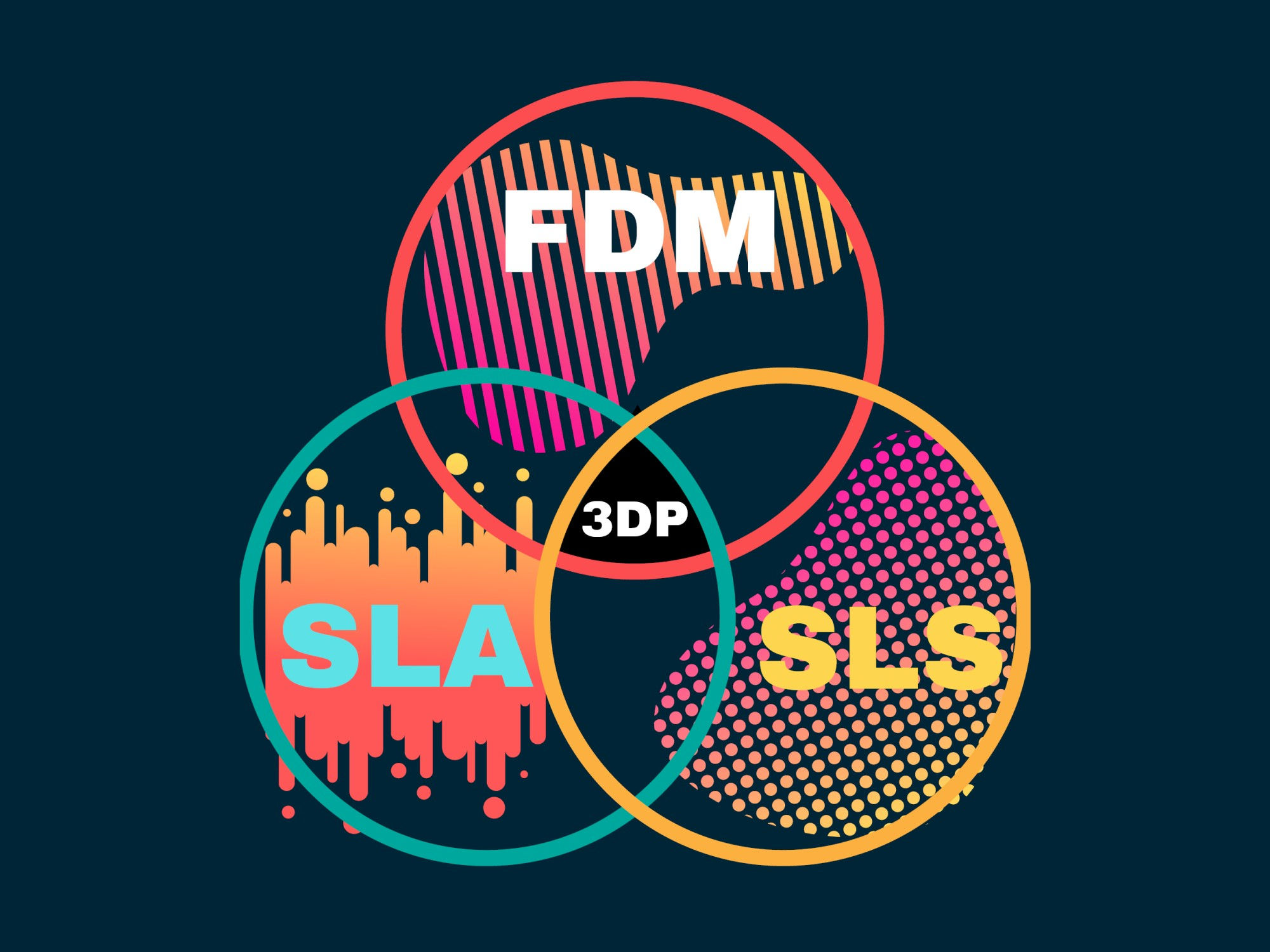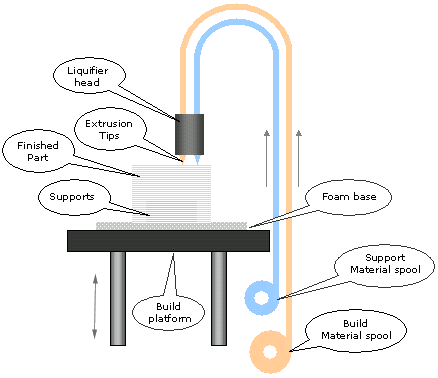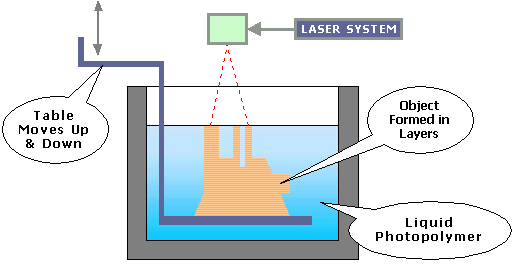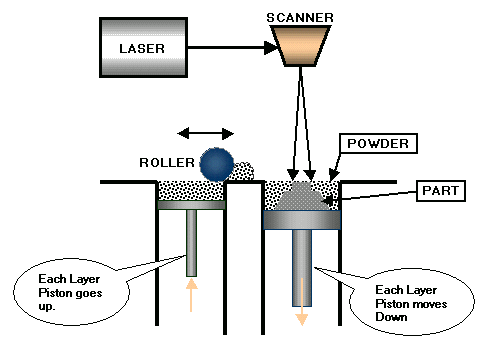Brief about emerging technologies of 3D printing, or additive manufacturing (AM)
3D printing, or additive manufacturing (AM), is one of the emerging technologies that are being applied for manufacturing components for a wide variety of applications. The low production cost, reduced time consumption, and high processing efficiency will increase the use of 3D printing technology in a variety of applications such as aerospace and defence, medical and dental, automotive, consumer goods, and so on. Before we go any further, let's take a quick look at 3D printing, also known as additive manufacturing technology. In this particular method, the manufacturing process is carried out by adding materials layer upon layer. 3D printing is a rapid prototyping technology that accelerates the ease of application. Fused Deposition Modelling (FDM), Stereo Lithography (SLA), Selective Laser Sintering (SLS), Digital Light Process (DLP), Multi Jet Fusion (MJF), PolyJet, Direct Metal Laser Sintering (DMLS), and Electron Beam Melting (EBM) are the seven different types of 3D printing methods. Among these seven types, Fused Deposition Modelling (FDM), Stereo Lithography (SLA), and Selective Laser Sintering (SLS) are the most widely used technologies.
In this article, we are going to undertake a comparison between FDM, SLA, and SLS. First of all, let us focus on these three separate technologies.
Fused Deposition Modelling (FDM)
Fused Disposition Modelling (FDM) is the most widely used type of 3D printing technology, and it is also known as Fused Filament Fabrication (FFF). In the FDM process, thermoplastic materials such as ABS (Acrylonitrile Butadiene Styrene), PLA (Polyactic Acid), Nylon (Polyamide), etc. in the form of spools of filaments are used as the raw materials. The parts are made by melting and extruding the filament through a nozzle, and the melted materials are deposited layer by layer on the print plate.
For better understanding and to make the comparison easier, let us consider the advantages and disadvantages of FDM. Furthermore, this method is suitable for producing simple parts as well as basic proof-of-concept models.
Advantages of FDM
- Environmentally safe in operation due to the application of non-toxic materials (except ABS)
- Relatively low cost for the equipment
- Relatively low cost of finishing
- Excellent structural stability
- Resistance to water, temperature and chemicals
- Supports are required
Disadvantages of FDM
- Low accuracy
- Limited design options
- Tensile strength is lower than the products prepared by injection moulding
Stereo Lithography (SLA)
This method is the second most commonly used process in the fields, and it was one of the first emerging 3D printing technologies developed.In this method, a process called photo-polymerization is used to produce the desired part. By this process, the liquid resin is cured into hardened plastic by applying a laser beam.
This is most suitable for producing components that require a high surface finish and smoothness, such as moulds and functional parts.
Advantages of SLA
- Has the highest resolution and accuracy
- Highest and smoothest surface finish among all the 3D printing methods
- Versatile technology
- Comparatively, fast technology
- Will be economical for low production runs
Disadvantages of SLA
- Materials cost is high
- Costly for higher production runs
- Supports are required
- Toxic matter are releasing during the process
- Waste materials are not recyclable and special waste management methods are required for handling the scrap
Selective Laser Sintering (SLS)
This is the most predictable 3D printing technology found so far. In a sealed chamber, a laser beam sinters powdered material, sometimes with an inert gas environment to avoid oxidation. Because the chamber is warmed to just below the melting point of the powder, the laser is only utilised to supply a small amount of energy to melt the powder. This method is applied to a variety of applications because of its strong and functional behaviour. Most commonly, Nylon is used as the raw material for carrying out this process because of some of its excellent properties, such as being lightweight, strong, and flexible, as well as stable against impact, chemicals, heat, UV light, water, and dirt.
Advantages of SLS
- Simple in operation
- No supports are required
- Powder can be reused after the process
- Durable
- Smooth and excellent surface finish
- Skilled labour force is not essential
Disadvantages of SLS
- Having long lead times
- Consumes long printing times for the large objects
- Cost of the machines are high
Comparison of the Technologies: FDM vs. SLA vs. SLS
Up to this point, you have a basic understanding of the three main types of 3D printing processes: FDM, SLA, and SLS. Before selecting the most suitable method for applying to fulfil your requirement, you should have a strong understanding of the comparison of these three methods based on several key features.
Now, we are going to compare and contrast the three main 3D printing processes, considering the following factors:
| • Operating principle | • Layer thickness | |
| • Used raw materials | • Ability to apply for complex designs | |
| • Applications | • Ease of use | |
| • Advantages | • Skills requirement | |
| • Disadvantages | • Requirement of infrastructure | |
| • Accuracy | • Printing without supportive structures | |
| • Resolution | • Printing objects with movable parts | |
| • Surface finish and smoothness |
Based on the above criteria, the three methods of 3D printing are compared, and Table below gives the summary of the comparison undertaken for FDM, SLA, and SLS.
| Criteria | FDM | SLA | SLS |
|---|---|---|---|
Operating principle |
Extrusion of melted filament | UV curing | Laser sintering |
Used raw materials |
Thermoplastic polymers such as, ABS, PLA, Nylon | Resins | Nylon |
Applications |
Low-cost rapid prototyping, Basic proof-of-concept models | Components which require high surface finish and smoothness such as functional prototyping patterns, moulds, and tooling. Dental applications, Jewellery Prototyping and casting, Model making | Functional prototyping, Short-run, bridge, or custom manufacturing |
Accuracy |
Low relative to other two | High | High |
Resolution |
Low | High | Moderate |
Surface finish and smoothness |
Low | High | Moderate |
Thickness of the layer |
0.1 - 0.3 mm | 0.05 - 0.15 mm | 0.060 - 0.15 mm |
Ability to apply for complex designs |
Low | Moderate | High |
Ease of use |
High | Low relative to FDM but equal to SLS | Low relative to FDM but equal to SLA |
Skills requirement |
Minor training is required on building setup, machine operation, and finishing. Moderate training is required on maintenance. | Minor training is required on building setup, maintenance, machine operation, and finishing. | Moderate training is required on build setup, maintenance, machine operation, and finishing. |
Requirement of infrastructure |
Air-conditioned environment or custom ventilation is required for desktop machines. | Desktop machines are suitable for an office environment. | Workshop environment with moderate space requirements are preferred for bench top systems. |
Printing without supportive structures |
Need to have supports | Supports are not always necessary | No need to have supports |
Printing objects with movable parts |
Not always achievable | Unachievable | Achievable |
Conclusion
Now, you have a solid foundation with the three main types of 3D printing methods and their behaviour. So, when you are selecting the most suitable method for your application, you have to keep this comparison in mind and finalise the optimum solution for the application based on the requirements. For further consideration, please refer to Service Comparison page.





